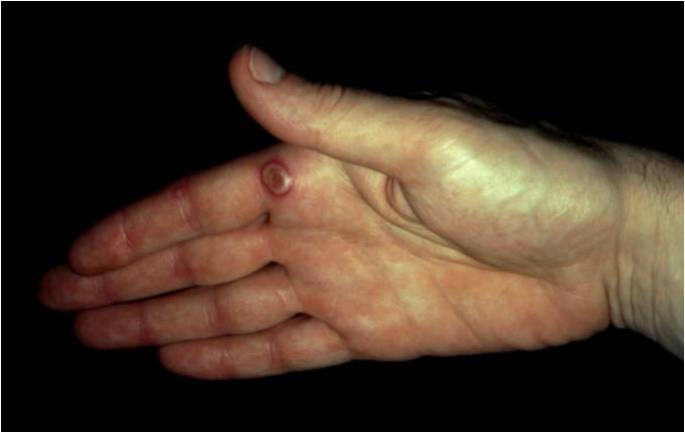Orf - a Serious disease affecting livestock and man
Published on 26 July 2010 in Food, health and wellbeing

Introduction
Orf is a highly contagious viral disease that causes painful scabby lesions on the lips and nostrils of affected animals. It is a significant welfare problem for both sheep and goats not just in the UK but worldwide and is regarded as being in the top 20 most important viral diseases affecting the rural poor in developing countries.
Key Points
- Although there is a vaccine against orf available, it is a fully virulent virus that can cause disease in its own right. For that reason its use is limited to farms which a known problem with the disease and cannot be given to sheep 7-8 weeks before they are due to lamb.
- Although the vaccine against orf is useful in reducing the effects of the disease on farms which have a history of orf, they do not provide long lasting solid immunity to orf and may contribute to the environmental pool of infection.
- Thorough disinfection of farm buildings is very important in the control of this disease as it is generally considered that the year to year spread and persistence of orf in sheep is based on animals becoming infected with virus shed into the environment from previously infected animals
 Orf is a zoonotic infection (can spread from animals to humans) so it also poses a significant health risk to humans who come in contact with infected animals.
Orf is a zoonotic infection (can spread from animals to humans) so it also poses a significant health risk to humans who come in contact with infected animals.
- Some anti-viral drugs have been shown to be effective in killing the orf virus, but these are currently not licensed for the treatment of this disease. The topical application of antiseptics, however, may reduce bacterial contamination of the lesions and help prevent secondary complications.
- The symptoms of orf are very similar to those of foot and mouth disease virus and blue tongue virus, so orf is an important differential diagnosis for other pathogens like these.
Research Undertaken
Research at Moredun has concentrated on three areas;
- understanding how orf virus interacts with the sheep host to cause the disease that it does;
- developing improved diagnostics for orf; and
- developing improved control strategies for orf including improved vaccines.
Policy Implications
 Orf is endemic both in the UK and worldwide wherever sheep and goats are farmed. It is regarded as being in the top 20 most important viral diseases affecting the rural poor in developing countries.
Orf is endemic both in the UK and worldwide wherever sheep and goats are farmed. It is regarded as being in the top 20 most important viral diseases affecting the rural poor in developing countries.
Author
Dr Colin McInnes colin.mcinnes@moredun.ac.uk







